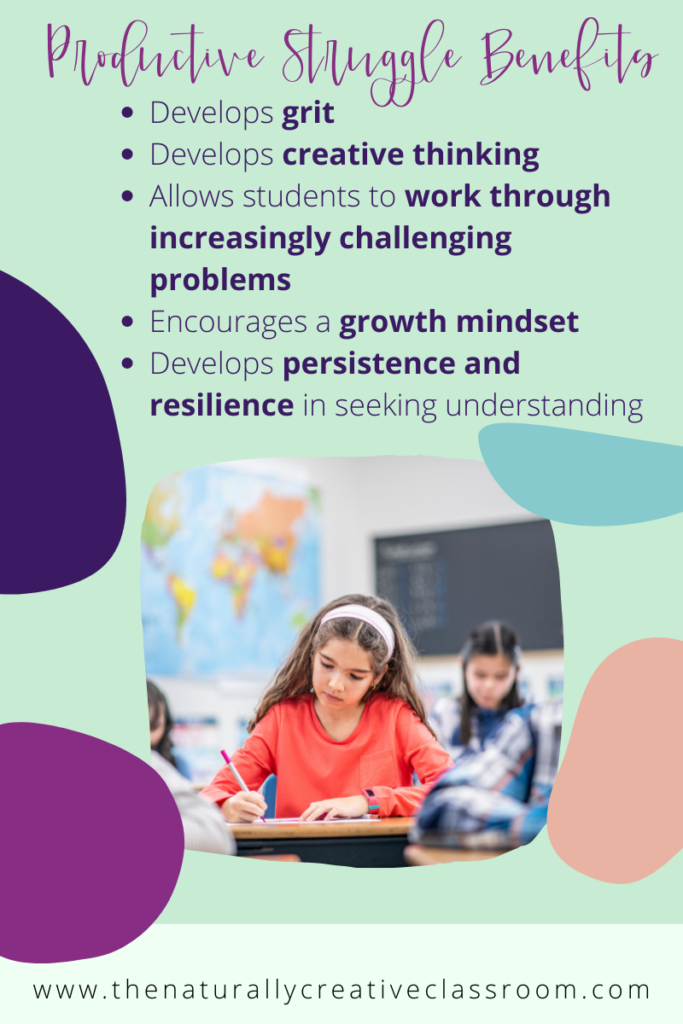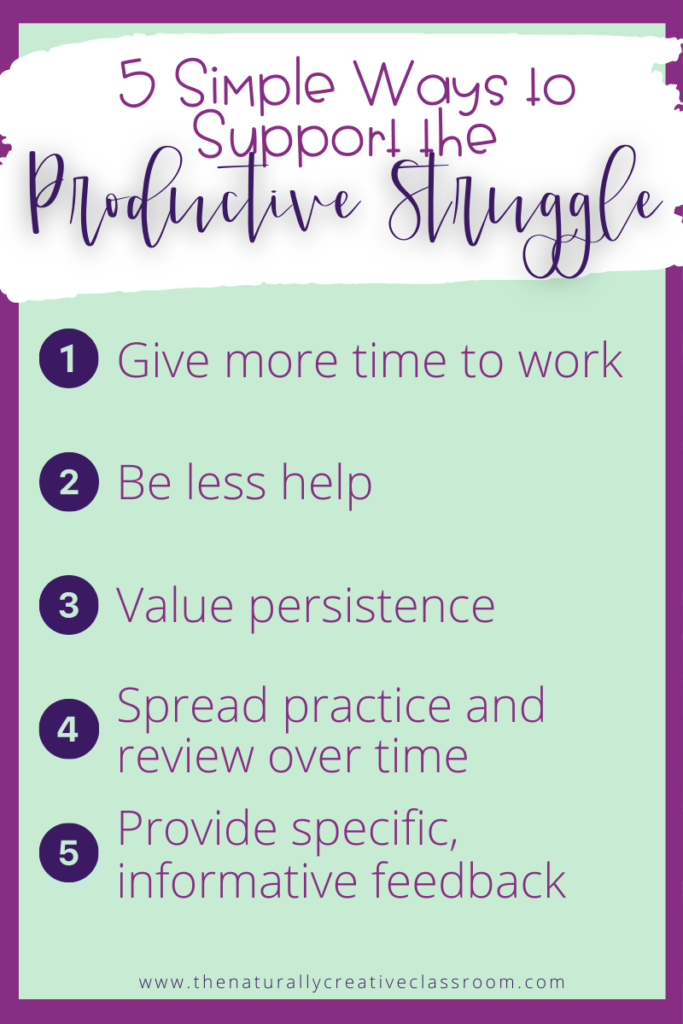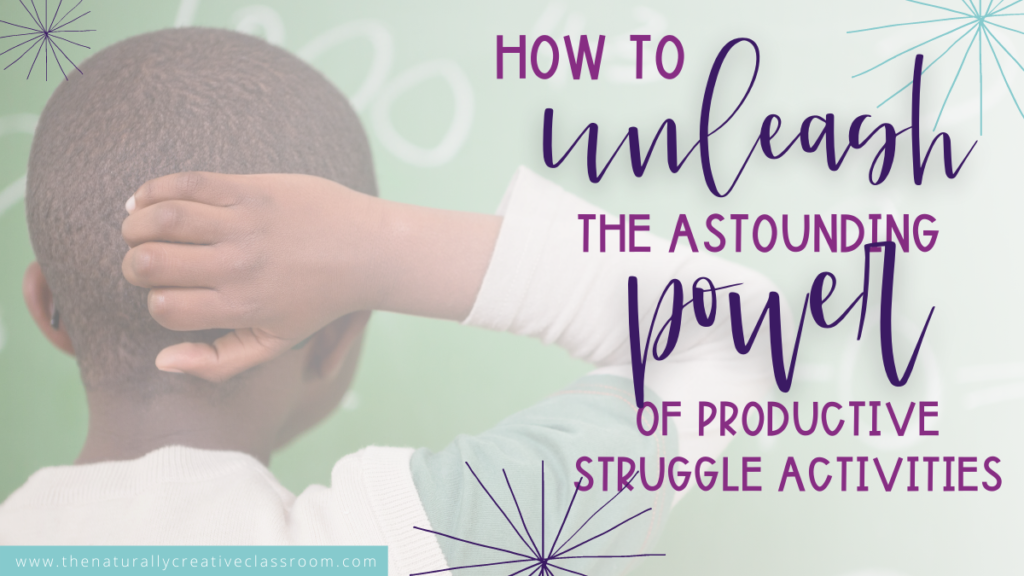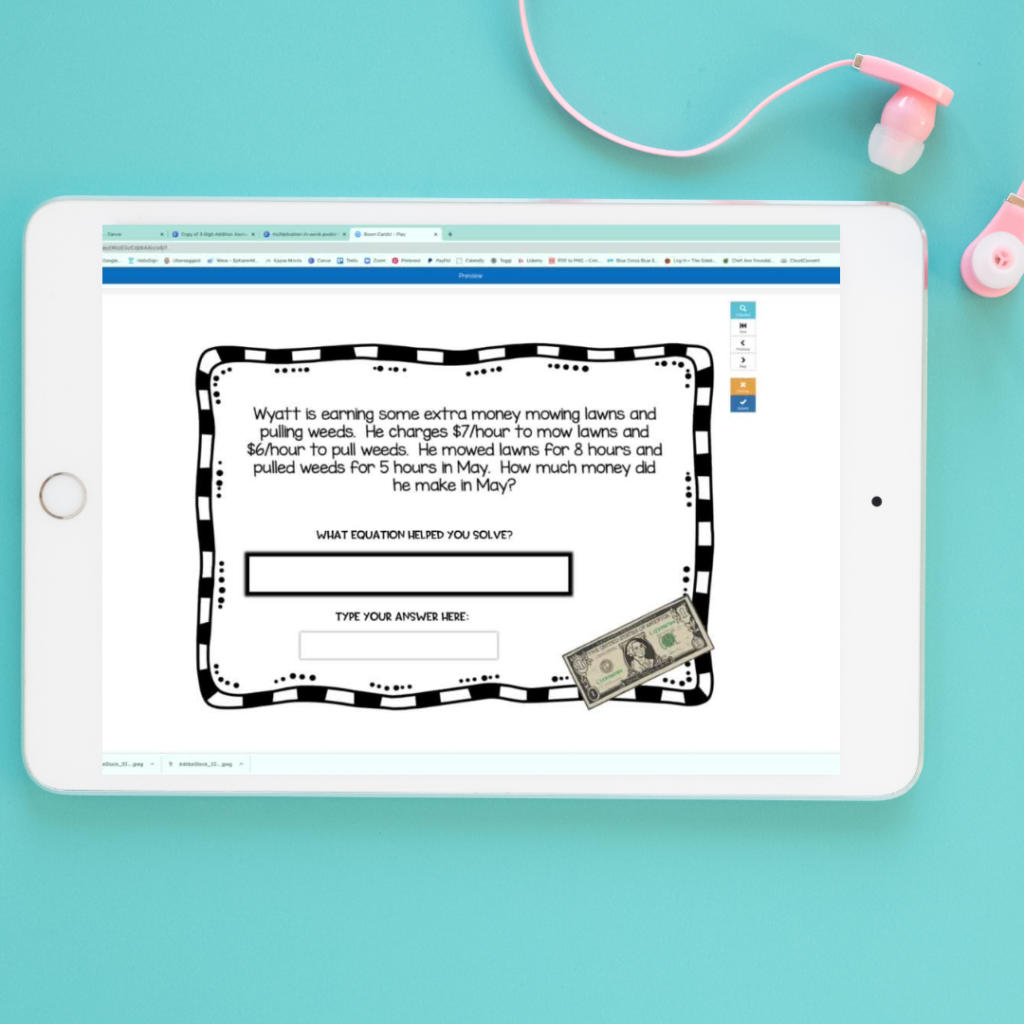One place where students expect to find a productive struggle activity is in games! Grab this free boom card deck of self-checking word problems to get you started.
In October of 2020, my twins were eight, and we had no idea if the city would literally cancel Halloween (you know how you might threaten your kids that you will cancel Halloween if they don’t listen? Well, this year, the city might actually cancel it). The year had already been full of disappointments- canceled trips, no hanging out with friends or family, stuck in our tiny apartment with mom, so I decided to do something a little different.
First, I purchased their favorite candies, a toy for each, and a Halloween-themed digital escape room. Next, I told them that to get their Halloween surprise, they had to solve all of the puzzles in the escape room first. Lastly, I briefly went over the types of answers expected, gave them the version with no hints, and three hint cards that they had to agree on to use. I explained that they could give me the hint card, and I would give them any hint I saw fit to help them solve the puzzle. When my kids solved a puzzle, they earned one fun-sized candy.
The day before Halloween, I handed them the puzzles and allowed them to get to work. Not one of the puzzles could be solved at first glance. They knew that there were color puzzles, direction puzzles, alphabet puzzles- but they did not know which puzzle was which (by design).
Watching your kids engage in the productive struggle is hard
At first, they spent a few minutes looking over the first few sheets and made a few incorrect guesses. After only a few minutes, they were ready for me to give them the answers.
I did not.
After that, they reluctantly went back to the puzzles and, with great joy and shared satisfaction, they solved one of the puzzles.
For an hour and a half, it went back and forth between jubilation to “I HATE THIS!!!” to putting their heads together to solve the task. It took about an hour, but they were SO PROUD of themselves for having done it, and I was so proud of them for having done it together and not giving up (I mean, there were toys and candy to be had).
When Valentine’s Day rolled around, I set up a similar task (typically not a gift-giving time, but the pandemic had canceled class Valentine’s). They were excited to tackle the escape room this time and had all the puzzles solved in under thirty minutes.

I had chosen these tasks on purpose because I want my kids to value productive struggle activities. As an educator, I know that the productive struggle is vital for learning and development, but I often see students simply give up when a task gets difficult. To build resilience, persistence, and a growth mindset, kids need to be engaged in productive struggle activities.
What is a good “Productive Struggle” definition?
The productive struggle is the state of engagement that allows students to work through increasingly difficult problems. In early elementary, the time might be as little as five minutes and may grow to 10-15 minutes in late elementary. Later in life, a career mathemetician might be willing to spend months engaged in the productive struggle over a problem.

An excellent example of productive struggle activities is video games. I think about all of the time I spent trying to win Super Mario Brothers. Hours and hours in the basement, jumping over turtles, smashing mushrooms, and agonizing each time I fell in lava because that meant I had to start all over again. When I got frustrated, there was no one to tell me how to beat Bowser, and I couldn’t look it up. I just had to try and try again until I finally won (which I did, thank you very much).
The reason games are important is because games help prime kids to engage in productive struggle. Children expect to fail when playing games. When children play games, they expect to have to try different strategies and get immediate feedback on how their process is working. To learn more about gamification and its positive impact in the classroom here.
Why is productive struggle important?
The willingness for a person to be engaged in the productive struggle is helpful in all areas of life, but the productive struggle in math is essential. The longer you are willing to be engaged in productive struggle activities is a direct predictor of how powerful a mathemetician you are. As educators, developing the critical thinking skills of a mathemetician is essential to being a well-rounded learner.
The Productive Struggle in Mathematics
- Develops grit
- Develops creative thinking
- Allows students to work through increasingly challenging problems
- Encourages a growth mindset
- Develops persistence and resilience in seeking understanding
These are just a few of the benefits of the productive struggle.

How to support productive struggle in learning mathematics
There are several ways that you can support productive struggle activities in your classroom. Here are my five favorite ways.
Time
If an educator wants students spend thirty minutes on one problem, students need to be given thirty minutes to spend on one problem. Finding time in a classroom to engage in productive struggle activities is one of the most challenging yet essential pieces. Could you use the time after a test or carve out “fun Friday” time to engage in this type of thinking once a month? (Don’t worry, I have some resources at the bottom that can indeed turn this into a “fun” activity”). Remember, what you schedule gets done.
Be Less Help
We are all 100% guilty of this one- jumping in to help a student who is struggling with a problem. It’s hard to watch your child or student grappling with a problem that you know you could help them solve in five minutes. We don’t want them to “suffer,” so we model it on the board or “take the pen” and do it for them. But folks, “The Struggle is REAL!”. It will lead to real learning and real development. Don’t always call on a student who always has the correct answer. If a student responds with “I don’t know,” your job is to model getting curious with them. Ask questions like “What might help us solve this problem?” or “What are you wondering about this problem?”
Model Persistence in the Classroom
Another way to promote productive struggle activities is to model that you value the productive struggle in the classroom. Complement students on their perseverance, not on whether they have the correct answer. Display student work that demonstrates creative thinking and unconventional problem-solving. You can nurture a growth mindset by giving students space to know it’s safe to take chances and fail.
Spread Practice and Review Over Time
Likewise, a critical part of the productive struggle is forgetting and re-learning information over time. Be sure not to abandon previous learning. An easy way to do this is to add a geometry question into the test on division or provide a low-stakes mixed review in your daily morning work or in “early finishers” folders.
Provide Specific, Informative Feedback
Instead of putting a grade or a smiley face on top of a test, provide specific feedback to students about something they did well. If you have a large class, start with only five students at a time. It will take longer, but it will be more valuable to your students in the long run.

Where Can I Find Productive Struggle Math Problems?
Now that you know how valuable the productive struggle is, here are a few resources to support implementing activities in your classroom!
For Year-Round Review:
I have a wide variety of spiral review activities in my shop. Try out hidden pictures, puzzles, and secret codes designed to engage and provide practice for concepts over time. Find them here.
If you check out the progressive struggle Ted Talk Math Class Needs a Makeover, you will see some examples of the video-based productive struggle math tasks that he has developed for his class. They include everything you need for the lesson.
Did you like the video-based productive struggle lessons in Math Class Needs a Makeover? Find free productive struggle math activities for grades k-6 by Graham Fletcher here.
Learn more about the productive struggle:
Productive Struggle and Math Riggor
The Neuroscience Behind Productive Struggle
Some of the strategies to support productive struggle activities may just require a sticky note on your lesson- “Call on Henry, Jace, and Lucy,” while some might require a tweak of your (already packed) schedule. I encourage you to try out just one of these strategies to see how it impacts the willingness of your students to engage in the productive struggle.




One Response